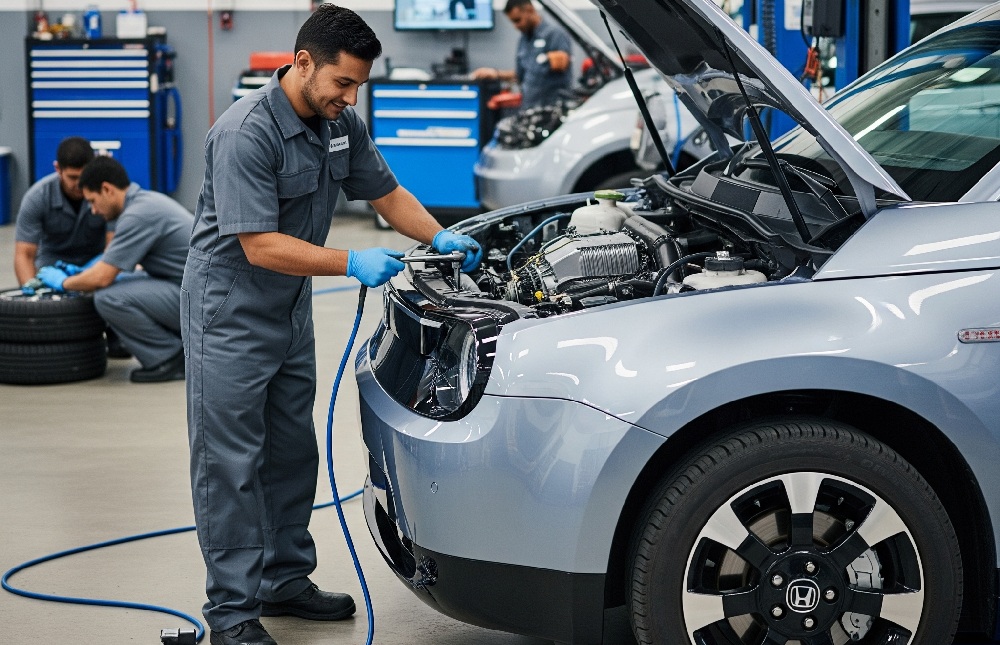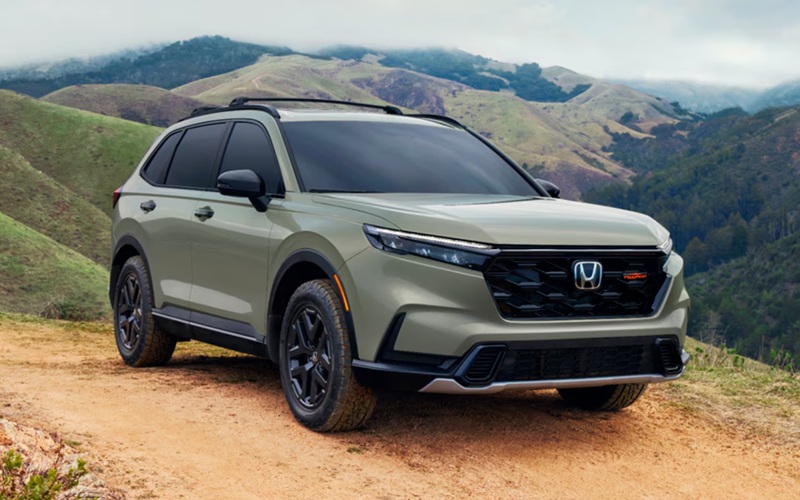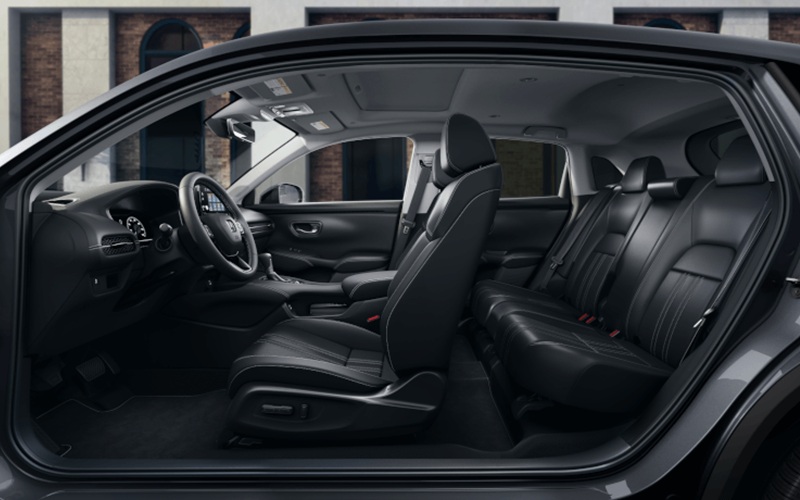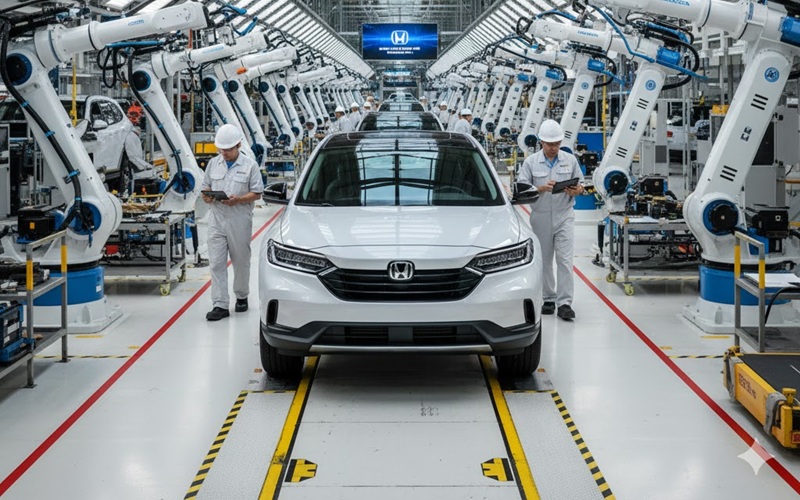The automotive landscape is rapidly evolving as electrification becomes increasingly prominent. Honda has embraced this shift with innovative electric vehicles that combine the brand’s renowned reliability with cutting-edge technology. For both new and prospective Honda EV owners, understanding the unique service and maintenance requirements of these vehicles is essential for ensuring optimal performance, longevity, and value.

The Honda Electric Vision
The Honda commitment to electrification is reflected in its growing lineup of electric and electrified vehicles. The Prologue represents the brand’s latest all-electric SUV, offering impressive range and technology. Meanwhile, hybrid models like the CR-V Hybrid, Accord Hybrid, and Civic Hybrid serve as stepping stones toward full electrification, delivering exceptional efficiency.
As part of its global vision, Honda aims to achieve carbon neutrality by 2050, with electric and fuel cell electric vehicles playing a crucial role in this transition. By understanding how to maintain these vehicles properly, owners can maximize their benefits while supporting environmental sustainability.
Honda EV Service Requirements
Electric vehicles feature significantly different architecture compared to their internal combustion counterparts, resulting in distinct service needs and schedules.
Components Unique to Electric Vehicles
Honda EVs contain several components that require specialized service:
- High-Voltage Battery System: The lithium-ion battery pack is the heart of any EV, providing energy storage for propulsion. These sophisticated systems include:
- Battery modules and cells
- Battery thermal management system
- Battery control module
- High-voltage connections and safety systems
- Electric Drive Motors: Unlike gas engines, which have hundreds of moving parts, electric motors have minimal moving components, significantly reducing wear and maintenance requirements.
- Power Electronics: These components convert and control electric power:
- Inverter (converts DC to AC for the motor)
- Converter (manages power between high and low voltage systems)
- Charger (controls external charging)
- Regenerative Braking System: This system recaptures energy during deceleration and braking, returning it to the battery while reducing wear on traditional braking components.
- Thermal Management Systems: Electric components require precise temperature control for optimal performance and longevity.
Standard Maintenance for Honda EVs
While electric vehicles eliminate many traditional maintenance items, they still require regular service:
- Battery Health Assessments: Honda service technicians can perform diagnostic checks to evaluate battery capacity, internal resistance, and overall health. These assessments help track battery performance over time and identify potential issues before they become significant problems.
- Cooling System Service: The thermal management system keeps the battery, motors, and electronics operating at optimal temperatures. Regular inspection and maintenance of cooling circuits, heat exchangers, and fluids ensure these systems function properly.
- Brake System Maintenance: Though regenerative braking reduces wear on friction brakes, these components still require periodic inspection and service. Honda recommends inspections every 12,000-24,000 kilometers, with particular attention to calliper operation, as less frequent use of hydraulic brakes can lead to binding or corrosion.
- Tire Rotation and Replacement: Due to the instant torque delivery and typically higher weight of EVs, you may experience accelerated tire wear. Regular rotation every 8,000-12,000 kilometers helps ensure even wear and maximum tire life.
- Cabin Air Filter: This should be replaced according to the standard maintenance schedule, typically every 24,000 kilometers or sooner in dusty conditions.
- 12-Volt Auxiliary Battery: EVs still incorporate a traditional 12-volt battery for accessories and control systems. This battery should be tested during service visits to ensure proper function.
- Fluid Checks: While EVs have fewer fluids than conventional vehicles, they still require monitoring:
- Brake fluid (check every 12 months)
- Coolant for battery and electronics (typically service-free for 10 years or 240,000 kilometers)
- Transmission fluid for models with reduction gearboxes
- Software Updates: One of the most significant maintenance items for EVs is software updates, which can improve efficiency, charging performance, and add new features. Honda service centers can ensure your vehicle has the latest software installed.
The Honda EV Service Experience
Servicing an electric vehicle requires specialized knowledge, tools, and safety protocols that differ from traditional vehicle service.
Specialized Training and Equipment
Honda technicians who work on electric vehicles undergo comprehensive training specific to high-voltage systems. This training covers:
- Safe handling of high-voltage components
- Proper diagnostic procedures
- Specific repair techniques for EV systems
- Battery evaluation and service
Service centers also invest in specialized equipment for EV maintenance:
- High-voltage safety tools and personal protective equipment
- Battery diagnostic systems
- Calibration equipment for EV-specific sensors and systems
- Software update systems
Safety Protocols
Working with high-voltage systems requires strict safety procedures:
- Powering Down: Before servicing high-voltage components, technicians follow specific procedures to de-energize the system, ensuring it’s safe to work on.
- Isolation Verification: Specialized testing equipment confirms that high-voltage systems are properly isolated before service begins.
- Designated Service Areas: Many Honda service centers have dedicated EV service bays with insulated tools, specialized equipment, and safety measures.
- Component Handling: Specific protocols govern the handling, storage, and transportation of high-voltage components within the service facility.
The Multi-Point Inspection for EVs
When you bring your Honda EV for service, technicians typically perform a comprehensive inspection that includes:
- High-Voltage System Check: Verifying proper operation and isolation of all high-voltage components.
- Battery Health Evaluation: Assessing the state of charge, capacity, and performance metrics of the high-voltage battery.
- Cooling System Inspection: Checking fluid levels, connections, and performance of thermal management systems.
- Charging System Test: Evaluating onboard charging components for proper function and efficiency.
- Drive System Assessment: Testing motors, power electronics, and related components for normal operation.
- Brake System Inspection: Checking both regenerative and friction braking systems for proper operation and wear.
- Suspension Components: Inspecting for wear and proper function, particularly important given the higher weight of EVs.
- Software Verification: Ensuring all control modules have the latest software updates.
Proactive Maintenance Strategies for Honda EV Owners
Beyond scheduled service, Honda EV owners can adopt several practices to optimize their vehicle’s performance and extend its longevity.
Battery Health Management
The high-voltage battery is the most valuable component in an electric vehicle. These practices help maintain its health:
- Optimal Charging Habits: For daily use, keeping the battery between 20% and 80% charge helps maximize battery life. Charging to 100% is beneficial primarily before long trips.
- Charging Speed Considerations: While DC fast charging is convenient for long trips, relying on slower Level 2 charging for routine needs places less thermal stress on the battery.
- Temperature Management: When possible, park in temperature-controlled environments, especially in extreme heat or cold. The battery thermal management system works less when the vehicle is parked in moderate temperatures.
- Regular Use: Electric vehicles benefit from regular driving rather than sitting unused for extended periods. If the vehicle will remain parked for several weeks, maintaining a charge level around 50% is ideal.
Extending Range Through Efficiency
Several practices can help maximize driving range:
- Climate Control Management: Precondition the vehicle while connected to a charger when possible. This allows the climate system to draw power from the grid rather than the battery.
- Eco Mode Utilization: Using the vehicle’s Eco mode adjusts power delivery and climate control for improved efficiency.
- Regenerative Braking Optimization: Learning to maximize regenerative braking through one-pedal driving techniques can significantly improve efficiency in urban environments.
- Tire Pressure Maintenance: Keeping tires properly inflated reduces rolling resistance and improves range. Check pressures monthly, particularly during temperature changes.
- Smooth Driving Techniques: Gradual acceleration and minimal hard braking help maximize range and component longevity.
Long-Term Service Considerations
As Honda EVs age, certain service considerations become increasingly important.
Battery Longevity and Management
Modern lithium-ion batteries in Honda EVs are engineered for longevity, typically retaining 70-80% of their original capacity after 8-10 years of normal use. Several factors affect this timeline:
- Climate Impact: Vehicles operated in moderate climates typically experience slower battery degradation than those in extremely hot or cold regions.
- Charging Patterns: Frequent DC fast charging may accelerate battery aging compared to primarily Level 2 charging.
- Depth of Discharge: Routinely discharging batteries to very low levels can accelerate degradation.
Service centers can perform detailed battery diagnostics to assess capacity retention and health, providing owners with insights into their battery’s condition. These assessments track degradation over time and can identify potential issues before they affect vehicle performance.
Software Updates and Their Importance
Unlike traditional vehicles, electric vehicles can receive significant improvements through software updates:
- Performance Enhancements: Updates may improve acceleration, range, or efficiency.
- Charging Optimizations: Software updates can enhance charging speed, scheduling, and battery management.
- Feature Additions: New conveniences or capabilities may be added through updates.
- System Corrections: Software updates address operational issues and improve reliability.
Regular service visits ensure these updates are applied, allowing owners to benefit from ongoing development efforts.
The Future of Honda EV Service
As Honda expands its electric vehicle offerings, service processes continue to evolve.
Predictive Maintenance
Honda is developing advanced diagnostics that can predict potential issues before they occur:
- Battery Cell Monitoring: Advanced systems track the performance of individual cells to identify potential weaknesses.
- Motor and Power Electronics Analysis: Monitoring of electrical characteristics can detect early signs of component degradation.
- Thermal System Performance: Tracking cooling system efficiency helps prevent potential overheating issues.
These technologies aim to minimize downtime and maximize vehicle reliability through proactive service.
Remote Diagnostics
Modern Honda EVs increasingly support remote diagnostic capabilities:
- Over-the-Air Analysis: You can check systems remotely to identify issues.
- Preventive Notifications: Owners may receive alerts when service is recommended based on vehicle data.
- Pre-Visit Diagnostics: Service centers can assess vehicle status before your arrival, streamlining the service process.
Technician Specialization
As EVs become more prevalent, Honda is developing specialized technician roles focused on electric vehicle systems:
- High-Voltage Specialists: Technicians with advanced training in battery and power electronics.
- Software Engineers: Personnel focused on control system programming and updates.
- Diagnostic Specialists: Technicians skilled in troubleshooting complex EV systems.
This specialization ensures Honda can provide expert service for increasingly sophisticated electric vehicles.
As Honda continues its electric journey, proper maintenance will remain essential for maximizing vehicle performance, efficiency, and longevity. By understanding the unique service requirements of electric vehicles and following recommended maintenance schedules, owners can enjoy the many benefits of electric mobility while preserving their investment for years to come.
Questions and Answers
How often does a Honda EV need to visit the service department?
- Electric vehicles typically require less frequent service than conventional vehicles. While the maintenance minder system will alert you when service is needed, most benefit from an inspection every 12,000 kilometers or annually, whichever comes first. These visits primarily focus on safety systems, braking components, tires, and software updates rather than the more extensive services required by internal combustion vehicles.
Do Honda EVs require any special maintenance during the winter months?
- Winter operations do require some special considerations. Pre-conditioning the vehicle while connected to a charger is highly recommended to preserve range. Additionally, service technicians can perform a winter battery check to verify that the thermal management system is functioning optimally. While not maintenance per se, using the scheduled departure feature to warm the vehicle while still connected to power can significantly improve winter driving range.
How long will the battery in my Honda EV last?
- Under normal operating conditions, you can expect the battery to retain approximately 70-80% of its original capacity after 8-10 years of use. Regular service visits include battery health checks that can track any degradation and identify potential issues early. Following best practices for charging and temperature management can significantly extend battery life beyond these baseline expectations.
What makes servicing a Honda EV different from servicing a conventional Honda?
- Servicing an EV involves specialized training, equipment, and safety protocols due to the high-voltage systems. Technicians working on EVs receive specific certification and use dedicated tools designed for electric vehicles. The service process focuses more on electronic systems, software, and battery health rather than the mechanical components and fluids that dominate conventional vehicle maintenance. Additionally, diagnostic procedures rely heavily on advanced computer systems to evaluate the sophisticated control systems in electric vehicles.
Can I skip scheduled maintenance because EVs have fewer moving parts?While electric vehicles have fewer mechanical components requiring service, regular maintenance remains important. Safety-critical systems, such as brakes, suspension, and steering, still require regular inspection. Additionally, they have sophisticated thermal management systems, electrical connections, and software that benefit from professional evaluation. Following the recommended service intervals ensures that these systems function properly, preserving both safety and vehicle value. Regular service visits also provide opportunities for software updates that can improve vehicle performance, efficiency, and features.




